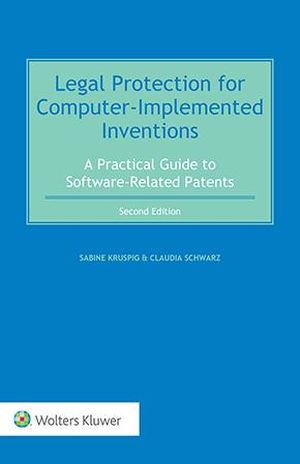
Legal Protection for Computer-Implemented Inventions, currently in its second edition, is an indispensable book furnishing an overview of the current status of computer-implemented inventions in patent law in major jurisdictions globally and in Europe. Owing to the incorporation of computer software into countless commercial and industrial products, the patentability of software and inventions in the area of Artificial Intelligence has become a vital issue in intellectual property law. A hugely pragmatic field research tool with guidance based on case law, this book examines the major hurdles in each particular country and describes the best practice to be adopted.
The legal situation in the key countries is summarized based on a list of twenty-seven law-related questions, providing a comprehensive overview. Clearly showing how enforceable software patent applications can be competitively drafted and how a patent portfolio for computer-implemented inventions can be established in several countries without spending money unnecessarily on problematic examination proceedings, this book covers the following issues and topics:
With separate chapters for the EPO and the key countries – Germany, the United States, China, Korea, Japan, and India – the legal situation for software-related inventions in each country or region, this book provides guidance on prosecution under national law, analyses of relevant court decisions, practice checklists, and an outlook on future developments. The authors describe claim formulation based on actual cases and on principles of computer science to show what might or might not be patentable in each jurisdiction.
This nonpareil resource will serve as a basis for patent attorneys and patent professionals in companies to make decisions about the most appropriate jurisdictions in which to file patent applications. This book will also be invaluable to computer professionals who are affected by the protection of software or who are actively involved in the protection of software by patent law.